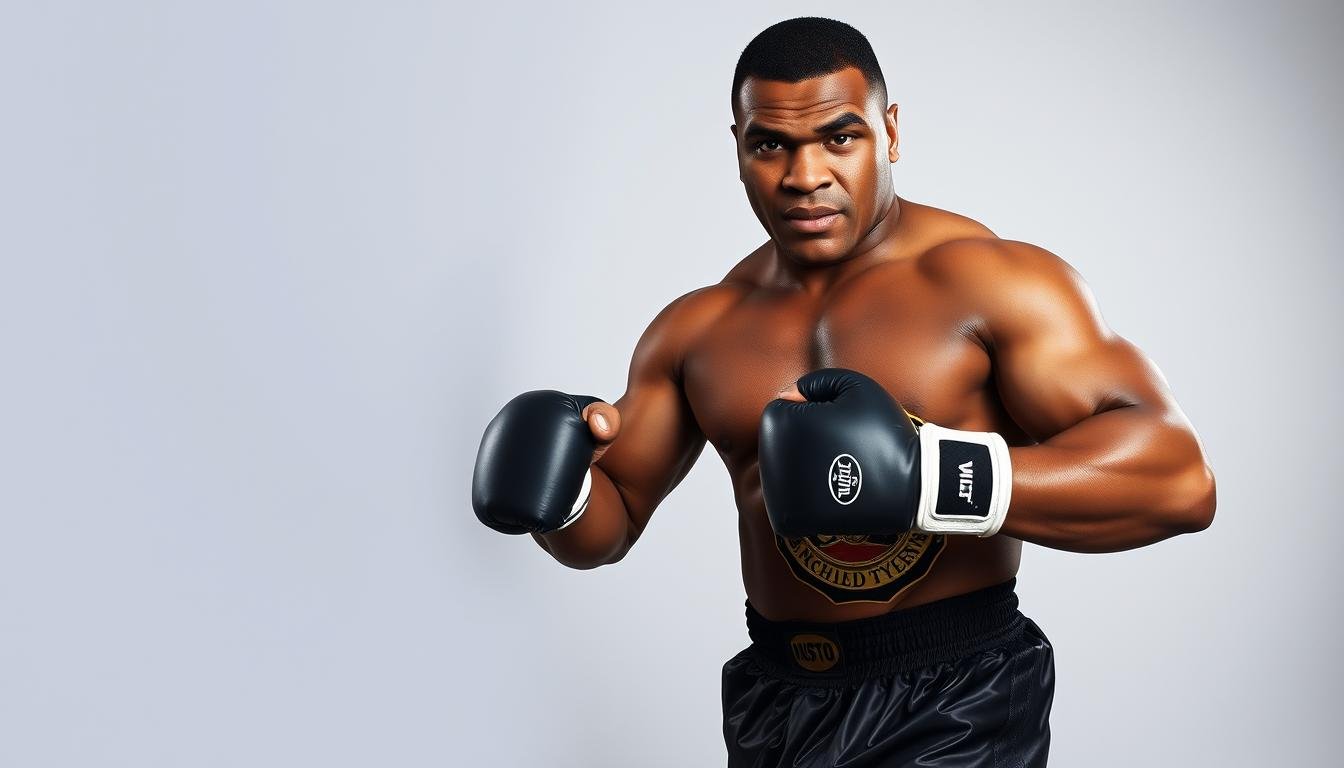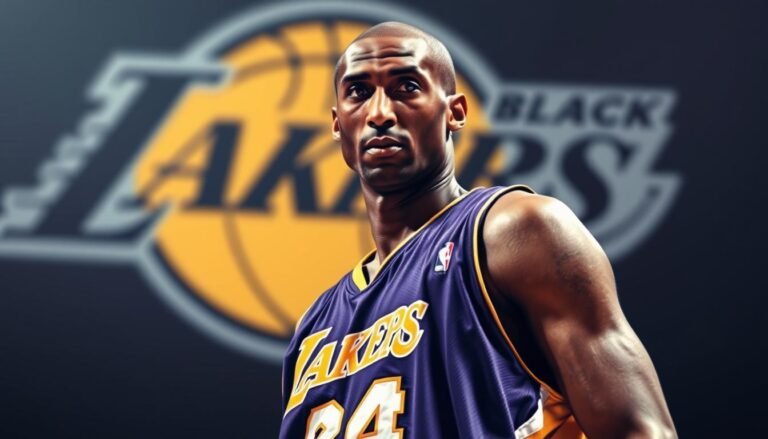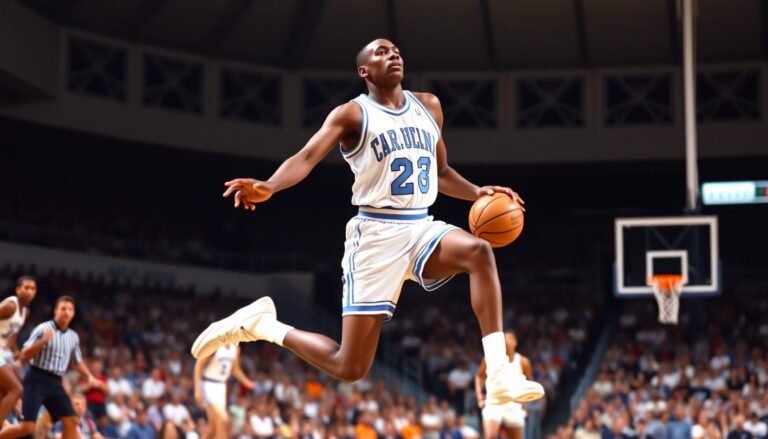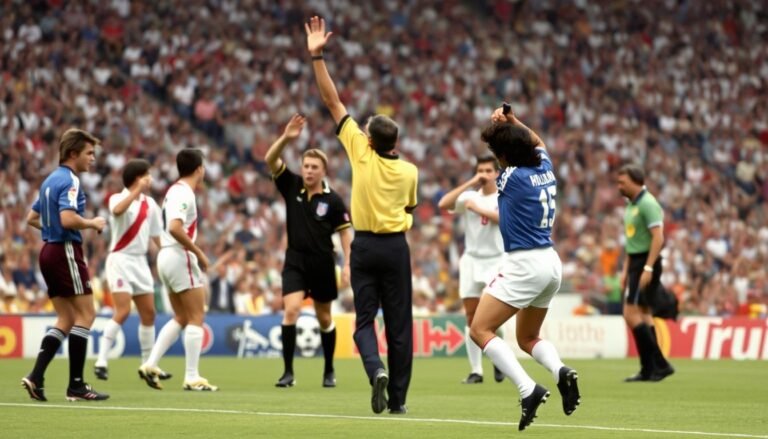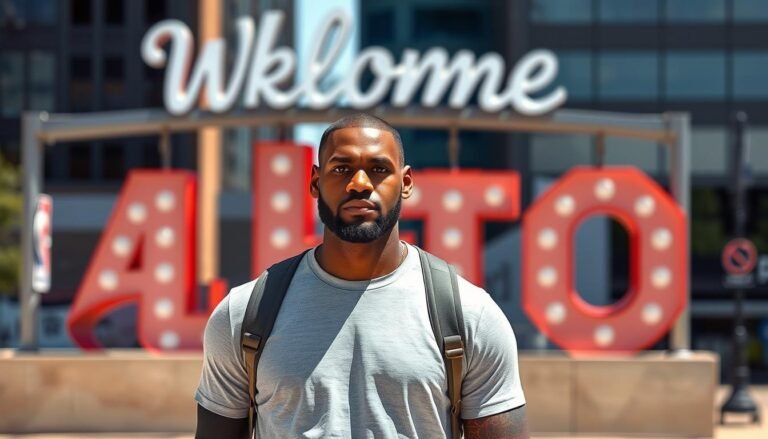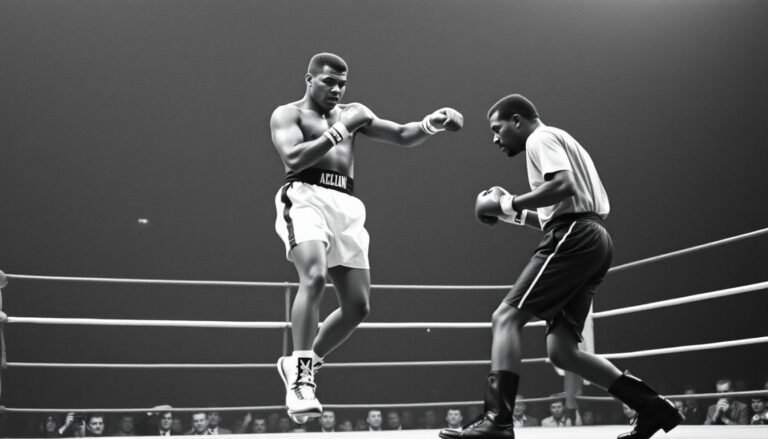Mike Tyson – The Rise, The Rage, The Redemption
Few figures in sports history have experienced the meteoric rise, catastrophic fall, and remarkable redemption quite like Mike Tyson. From the impoverished streets of Brooklyn to becoming the youngest heavyweight champion in boxing history, through personal and legal turmoil, and finally to cultural icon status – Tyson’s journey embodies the ultimate tale of human resilience. His story transcends boxing, becoming a powerful narrative about fame, self-destruction, and ultimately, the possibility of reinvention. This is the story of “Iron Mike” – a man whose life has been defined by spectacular triumphs, devastating failures, and an ongoing quest for personal redemption.
The Rise: From Brooklyn Streets to Heavyweight Champion
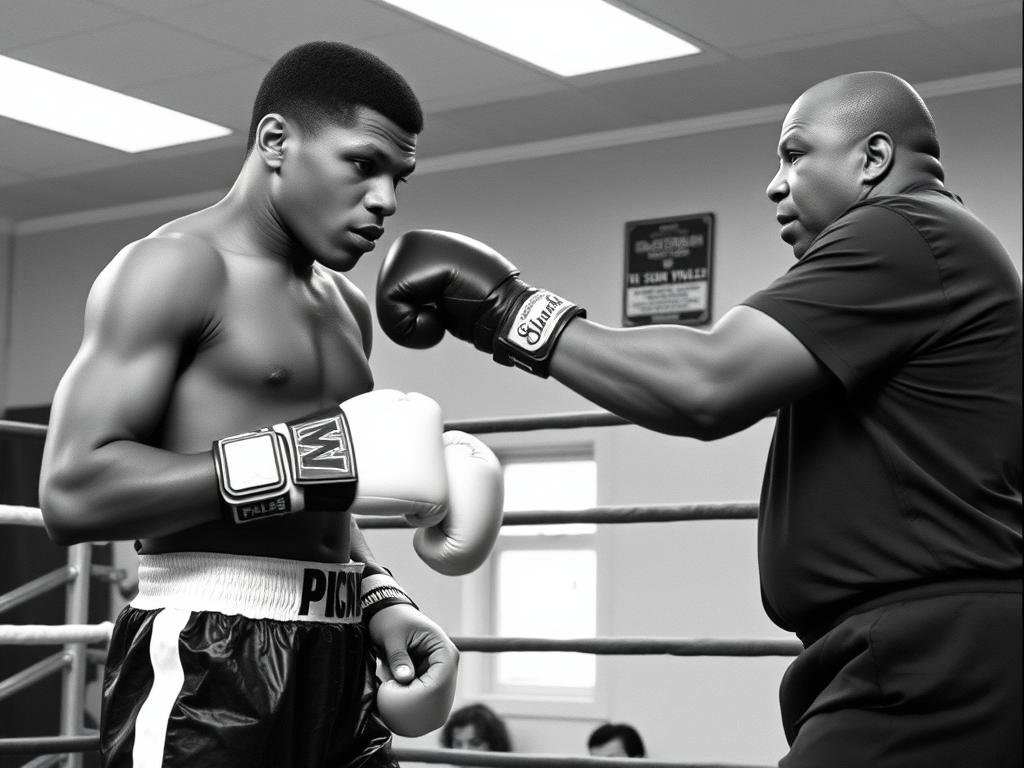
Early Life and Cus D’Amato’s Mentorship
Born on June 30, 1966, in Brooklyn, New York, Michael Gerard Tyson’s early years were marked by hardship and delinquency. Growing up in the crime-ridden neighborhood of Brownsville, young Tyson was arrested 38 times by age 13, his aggression and fighting skills honed by necessity on the tough streets. His life took a pivotal turn when he was sent to the Tryon School for Boys in Johnstown, New York.
At this juvenile detention facility, boxing counselor Bobby Stewart recognized Tyson’s raw talent and introduced him to legendary boxing trainer Cus D’Amato. This meeting would forever alter the trajectory of Tyson’s life. D’Amato, seeing immense potential in the troubled youth, became Tyson’s legal guardian after his mother’s death when Tyson was 16.
“I never saw my mother happy with me and proud of me for doing something. She only knew me as being a wild kid running the streets, coming home with new clothes that she knew I didn’t pay for. I never got a chance to talk to her or know about her. Professionally, it has no effect, but it’s crushing emotionally and personally.”
Under D’Amato’s tutelage, Tyson learned the “peek-a-boo” boxing style – a defensive stance with hands held high near the cheeks and constant head movement. This technique, combined with Tyson’s natural power and speed, created a formidable fighting machine. D’Amato instilled not just boxing skills but discipline and purpose into the young fighter, transforming his rage into controlled aggression.
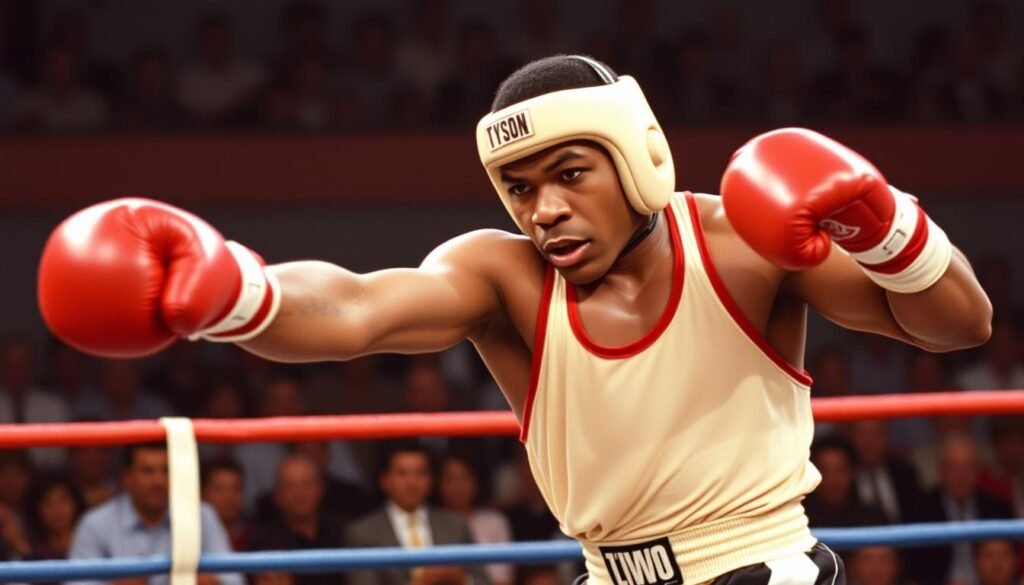
Historic Achievements in Boxing
Tyson’s amateur career was impressive, compiling a 24-3 record and winning gold medals at the 1981 and 1982 Junior Olympic Games. He turned professional in 1985 at age 18, quickly establishing himself as a fearsome force in the heavyweight division. His fighting style was unlike anything boxing had seen – a compact, explosive combination of speed, power, and defensive skill that overwhelmed opponents.
On November 22, 1986, at just 20 years and 4 months old, Tyson defeated Trevor Berbick by a second-round TKO to become the youngest heavyweight champion in history – a record that still stands today. This victory was just the beginning of his dominance. By 1987, after defeating James Smith and Tony Tucker, Tyson became the undisputed heavyweight champion, holding the WBC, WBA, and IBF titles simultaneously.
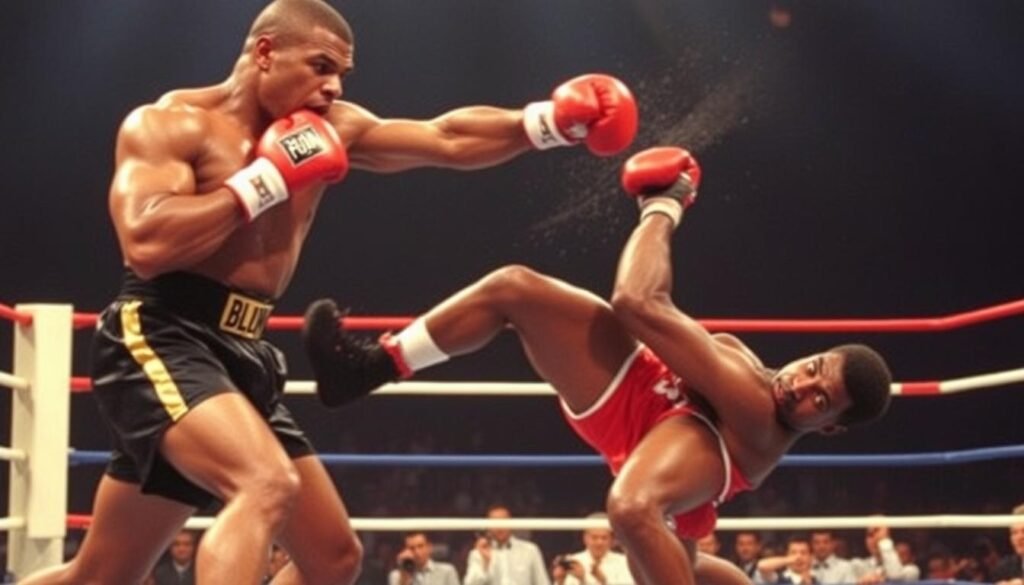
His most iconic victory came on June 27, 1988, when he knocked out previously undefeated Michael Spinks in just 91 seconds. This fight, which earned Tyson $22 million, cemented his reputation as “the baddest man on the planet.” At his peak, Tyson’s fights were often short and devastating – of his first 37 professional fights, 33 ended in knockout, with 17 of those coming in the first round.
Public Persona and Cultural Impact
Tyson’s impact extended far beyond the boxing ring. His ferocious fighting style, intimidating presence, and the aura of invincibility made him a global phenomenon. With his signature black shorts, no socks, and menacing entrance to the ring, Tyson revolutionized boxing’s appeal and brought unprecedented attention to the heavyweight division.
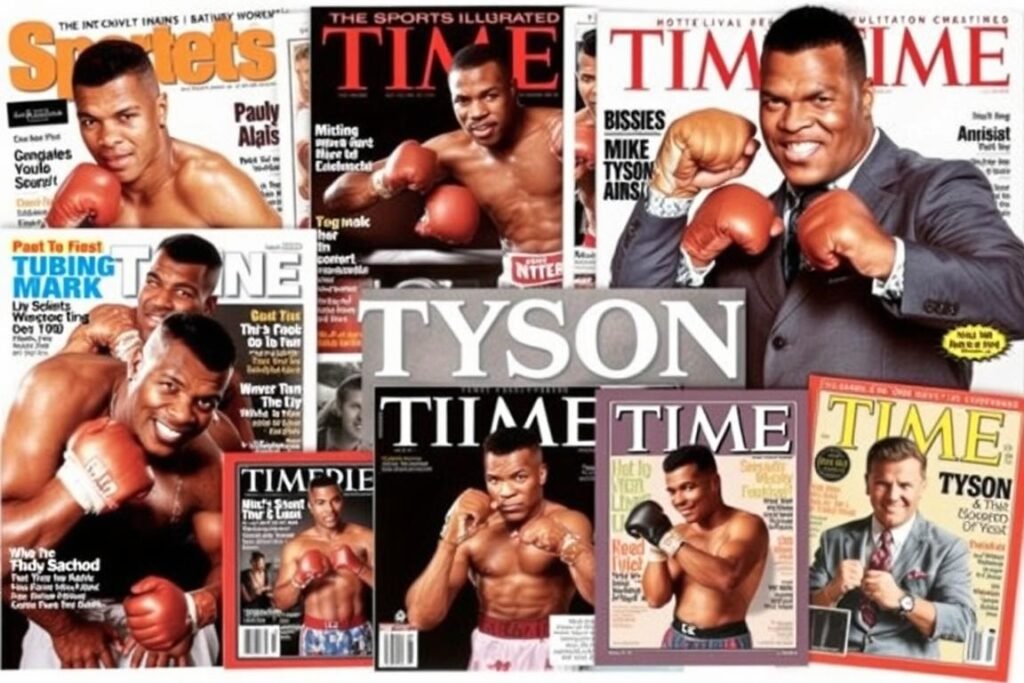
His cultural influence was so significant that Nintendo featured him in the wildly popular video game “Mike Tyson’s Punch-Out!!” in 1987. Tyson transcended sports to become a pop culture icon, appearing on talk shows and commanding media attention wherever he went. His distinctive high-pitched voice, combined with his fearsome reputation, created a fascinating contradiction that captivated the public.
By the late 1980s, Tyson had amassed enormous wealth and fame. His earnings were unprecedented for the era, and his lifestyle became increasingly lavish. He purchased mansions, exotic cars, and even Bengal tigers as pets. Yet beneath the success, personal demons and the pressures of fame were beginning to take their toll.
Discover More Boxing Legends
Want to explore the stories of other boxing greats? Subscribe to our newsletter for weekly features on legendary fighters, historic matches, and exclusive boxing insights.
The Rage: Controversies, Downfall, and Personal Struggles
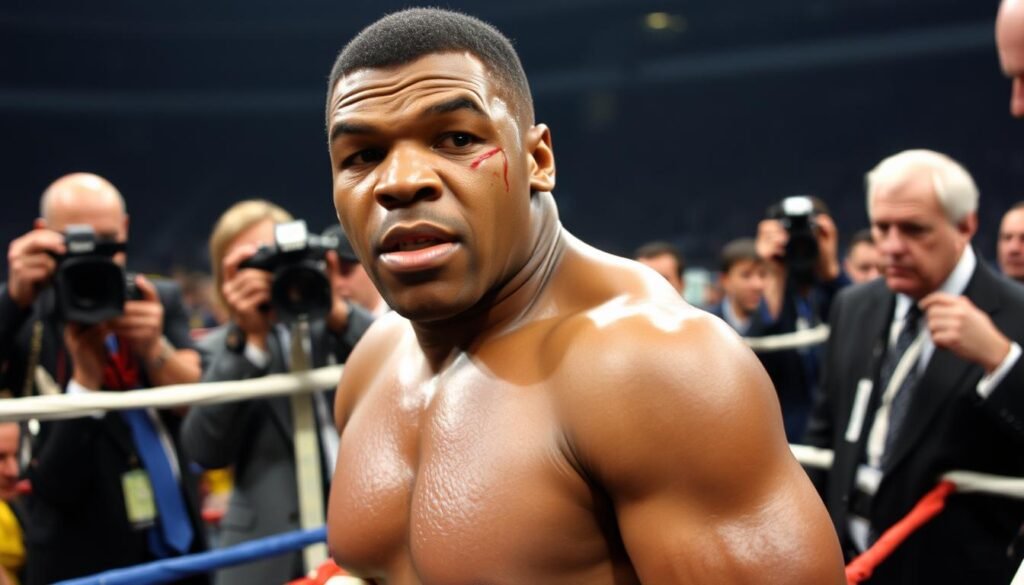
Legal Issues and Personal Controversies
The first major crack in Tyson’s seemingly invincible armor came with his tumultuous marriage to actress Robin Givens in 1988. Their relationship was plagued by allegations of domestic abuse, culminating in a notorious joint interview with Barbara Walters where Givens described life with Tyson as “torture, pure hell.” The couple divorced in 1989 after just eight months of marriage.
Then came the shocking upset in Tokyo on February 11, 1990, when 42-1 underdog James “Buster” Douglas knocked out Tyson in the 10th round. This defeat shattered the myth of Tyson’s invincibility and marked the beginning of his downward spiral.
The most serious blow to Tyson’s career and reputation came in 1991 when he was accused of raping 18-year-old Desiree Washington, a Miss Black America pageant contestant. In February 1992, Tyson was convicted and sentenced to six years in prison, serving three years before being released on parole in March 1995.
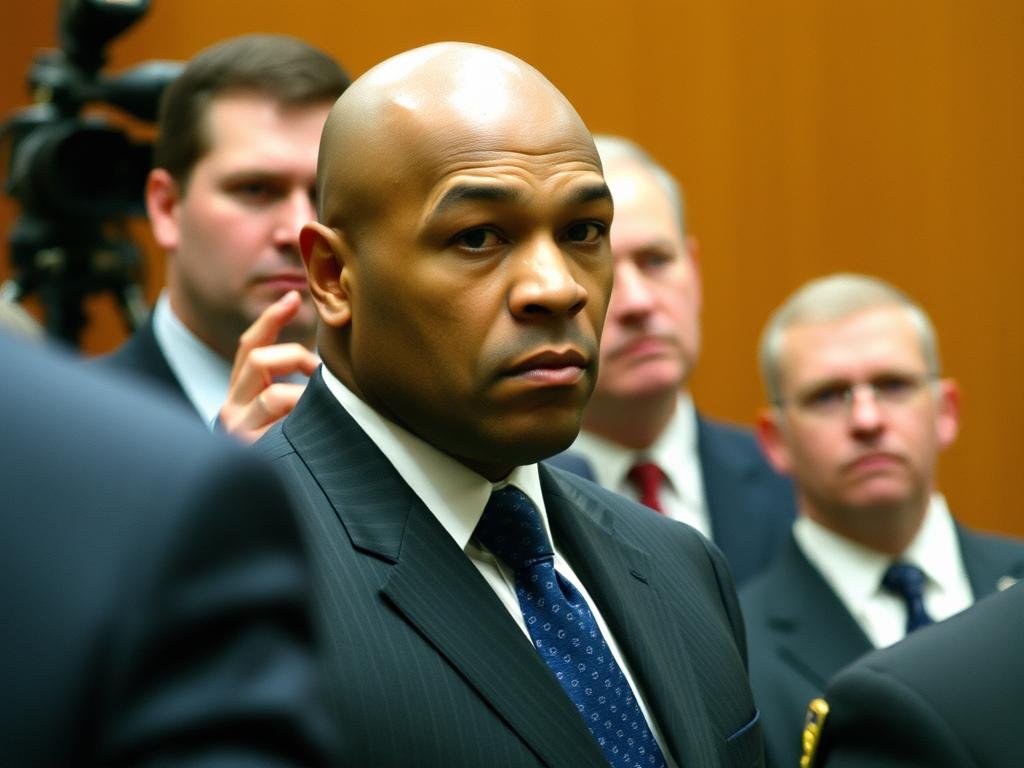
“My whole life has been a waste – I’ve been a failure. I just want to escape. I’m really embarrassed with myself and my life.”
The Infamous “Bite Fight” and Career Decline
Upon his release from prison, Tyson attempted to reclaim his boxing glory. He won the WBC and WBA heavyweight titles in 1996, but his comeback was short-lived. The most notorious moment of his career came on June 28, 1997, in his rematch against Evander Holyfield. Frustrated by what he perceived as headbutting from Holyfield, Tyson bit off a piece of Holyfield’s ear in the third round.
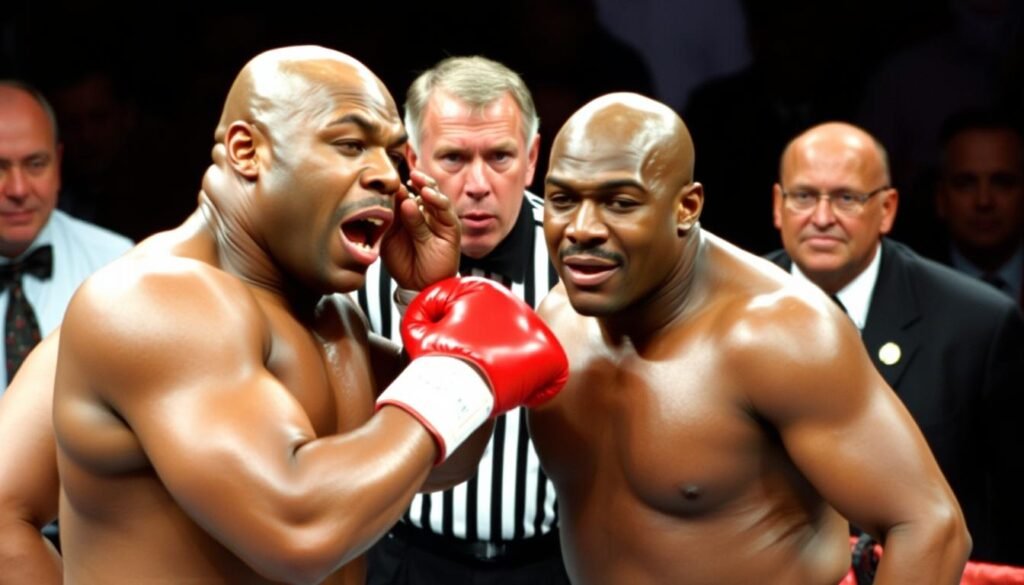
This shocking act resulted in immediate disqualification, a $3 million fine, and the temporary revocation of his boxing license. The “Bite Fight,” as it became known, cemented Tyson’s image as a volatile and unpredictable figure. His reputation, already damaged by his conviction, was now irreparably tarnished in the eyes of many boxing fans and the general public.
Tyson’s career continued its downward trajectory in the years that followed. Though he returned to boxing, he never recaptured his former dominance. His 2002 title fight against Lennox Lewis ended in a knockout loss in the eighth round. Financial troubles mounted despite having earned over $300 million during his career. By 2003, Tyson was forced to file for bankruptcy, claiming debts of approximately $23 million.
Media Criticism and Public Perception
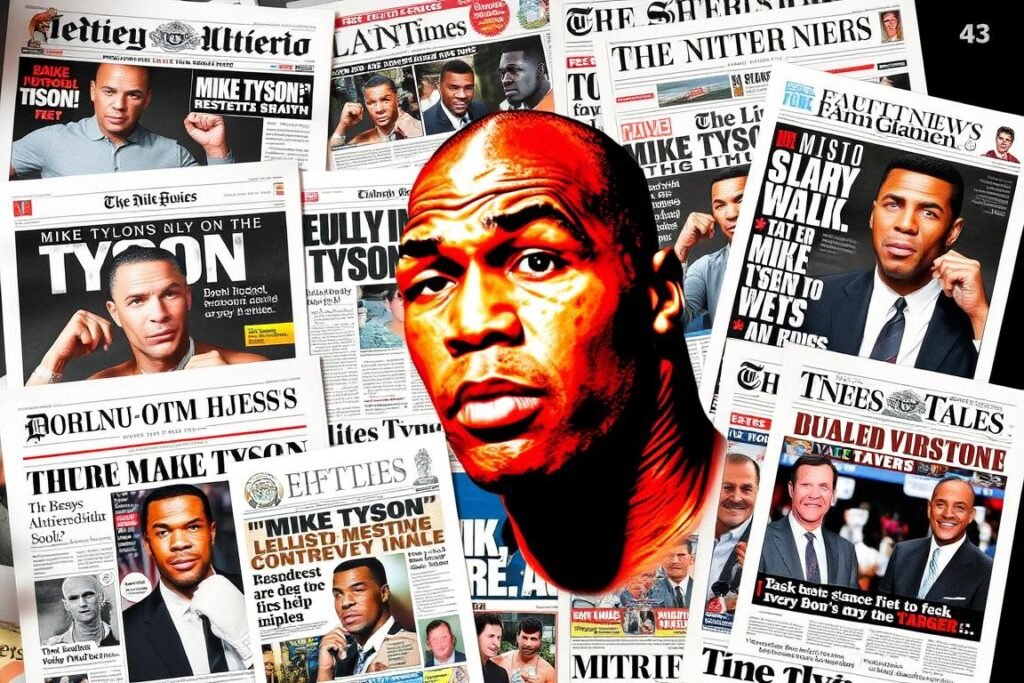
Throughout this period, Tyson became a favorite target for media criticism. Tabloids eagerly documented his every misstep, and he was often portrayed as the quintessential cautionary tale of an athlete who had it all and lost everything. His erratic behavior, including bizarre post-fight comments (such as his infamous 2000 statement about wanting to “eat” Lennox Lewis’s children), only fueled this negative coverage.
Public perception of Tyson transformed from that of a respected champion to a troubled and dangerous figure. Comedy shows and late-night television regularly used him as the punchline for jokes about violence and self-destruction. The man who had once been boxing’s most marketable star was now its most controversial pariah.
By the mid-2000s, Tyson’s boxing career was effectively over. His final professional fight came on June 11, 2005, when he quit before the seventh round against journeyman Kevin McBride. At 38, physically and emotionally exhausted, Tyson admitted he no longer had “the fighting guts or the heart” to continue in the sport that had defined his life.
Listen to Mike Tyson’s Story in His Own Words
Hear Mike Tyson discuss his life journey, boxing career, and personal transformation on his popular podcast “Hotboxin’ with Mike Tyson” – featuring conversations with athletes, entertainers, and thought leaders.
The Redemption: Reinvention and Cultural Rehabilitation
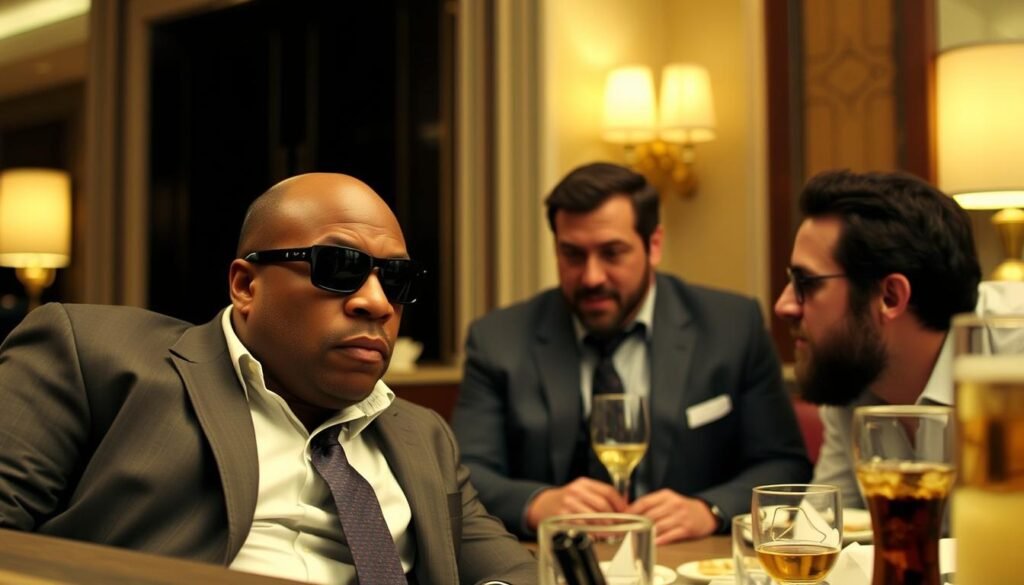
Post-Retirement Reinvention
Mike Tyson’s journey of redemption began in the most unlikely of places – popular culture. His memorable cameo in the 2009 blockbuster comedy “The Hangover” marked a turning point in his public image. Playing a comedic version of himself, Tyson showed a self-awareness and willingness to poke fun at his intimidating reputation that resonated with audiences.
This successful foray into entertainment opened new doors. Tyson embraced opportunities that would have seemed improbable during his boxing days. He launched a one-man show, “Mike Tyson: Undisputed Truth,” directed by Spike Lee, which toured nationally and appeared on Broadway. The show allowed Tyson to tell his story in his own words, addressing his troubled past with surprising candor and vulnerability.
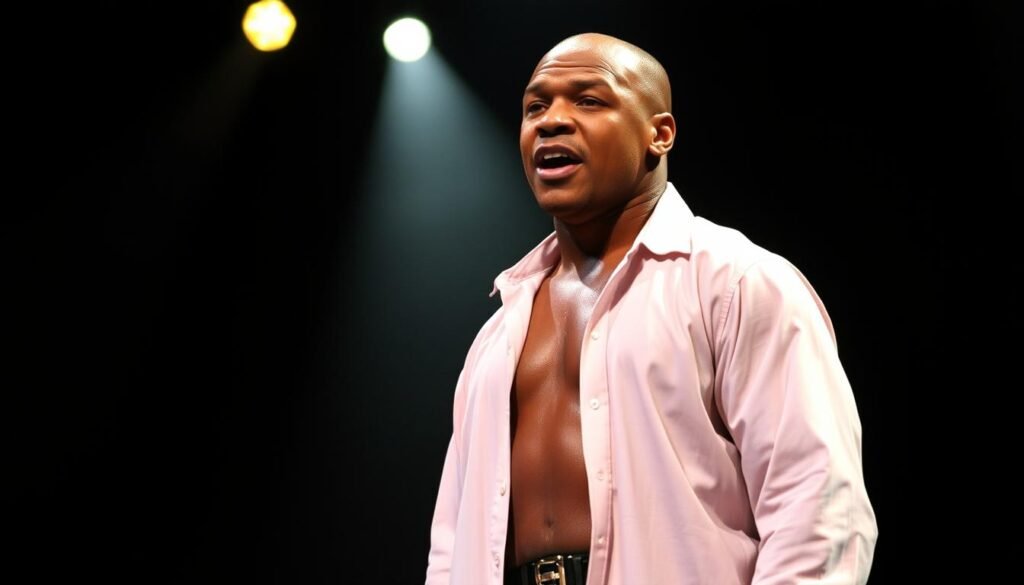
His reinvention continued with the animated series “Mike Tyson Mysteries” (2014-2020), an Adult Swim cartoon that playfully reimagined Tyson as a mystery-solving detective. The show’s success demonstrated Tyson’s newfound ability to connect with younger audiences who might not have witnessed his boxing prime.
In 2018, Tyson ventured into the cannabis industry, launching Tyson Ranch, a 40-acre marijuana resort and production facility in California. This business move aligned with his personal advocacy for the medicinal benefits of cannabis, which he credits with helping him manage his own health issues. The venture has since expanded into Tyson 2.0, a nationally recognized cannabis brand.
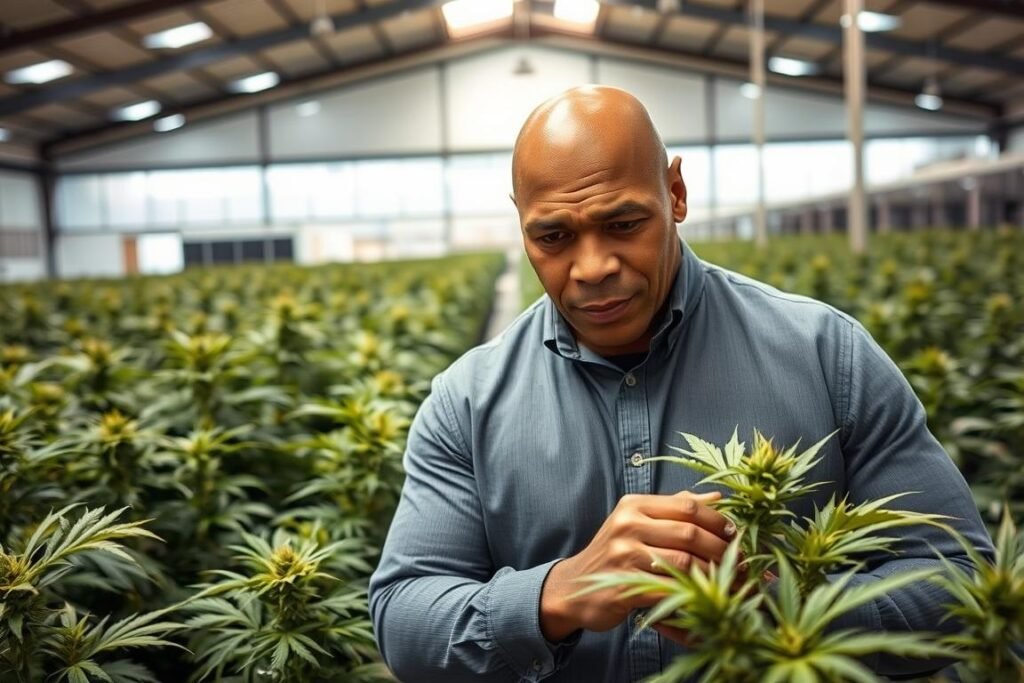
Personal Growth and Mental Health Advocacy
Perhaps the most significant aspect of Tyson’s redemption has been his personal transformation. After years of substance abuse, he embraced sobriety and began speaking openly about his struggles with mental health. In interviews, podcasts, and his 2013 memoir “Undisputed Truth,” Tyson has discussed his battles with addiction, bipolar disorder, and the emotional trauma that fueled his self-destructive behavior.
“I’m a student of war. I know all the warriors. From Charlemagne to Achilles – the number one warrior of all warriors – and then Alexander and Napoleon, I know them all. I’ve read about them all. I’ve studied them all. I know the art of fighting, I know the art of war, that’s all I ever studied.”
His podcast, “Hotboxin’ with Mike Tyson,” launched in 2019, has become a platform for meaningful conversations about mental health, resilience, and personal growth. Tyson’s willingness to show vulnerability and discuss his own psychological journey has helped destigmatize mental health issues, particularly among men and in the sports community.
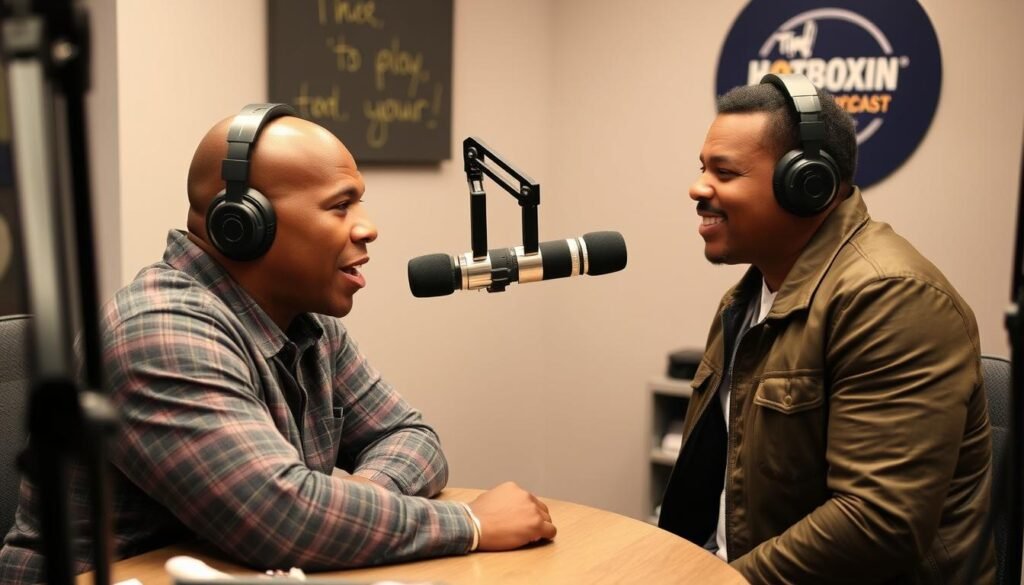
Family has played a crucial role in Tyson’s redemption story. His marriage to Lakiha “Kiki” Spicer in 2009, shortly after the tragic death of his four-year-old daughter Exodus, provided stability during one of his darkest periods. As a father to seven children, Tyson has spoken about his commitment to being present and supportive in ways his own father never was.
Legacy Reassessment and Cultural Rehabilitation
In 2020, at age 54, Tyson returned to the boxing ring for an exhibition match against Roy Jones Jr. The event, which ended in a draw, generated enormous public interest and was one of the highest-selling pay-per-view events of the year. This successful comeback demonstrated Tyson’s enduring appeal and the public’s willingness to embrace his redemption narrative.
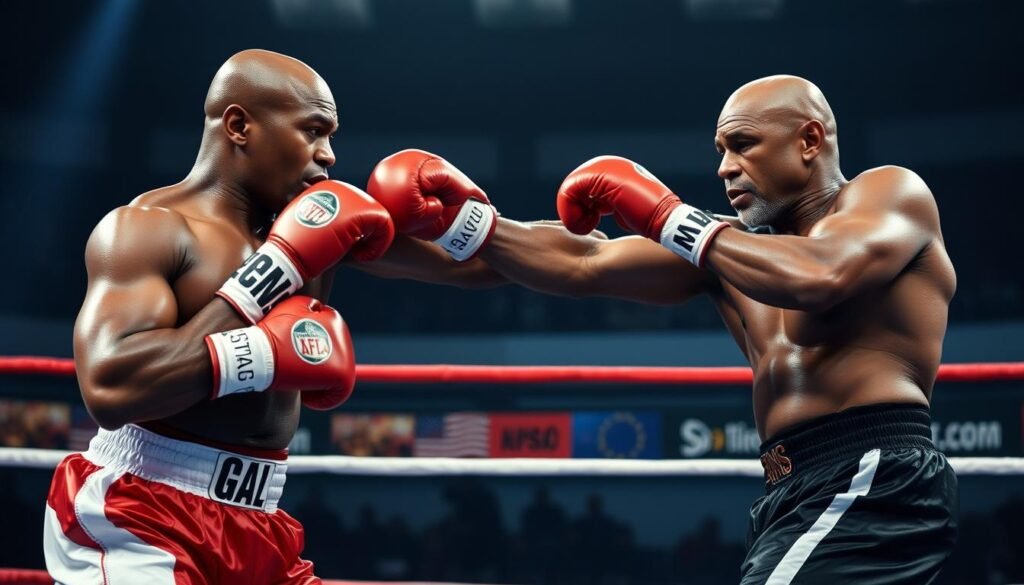
The 2008 documentary “Tyson,” directed by James Toback, and later documentaries like ESPN’s “Mike Tyson: The Knockout” (2021) have helped recontextualize Tyson’s story for modern audiences. These productions present a more nuanced view of his life, acknowledging both his transgressions and his efforts at redemption.
In 2011, Tyson was inducted into the International Boxing Hall of Fame, a recognition of his undeniable impact on the sport despite his controversial history. Modern boxing analysts and historians now typically rank him among the greatest heavyweight boxers of all time, focusing on his athletic achievements while acknowledging the complexities of his personal story.
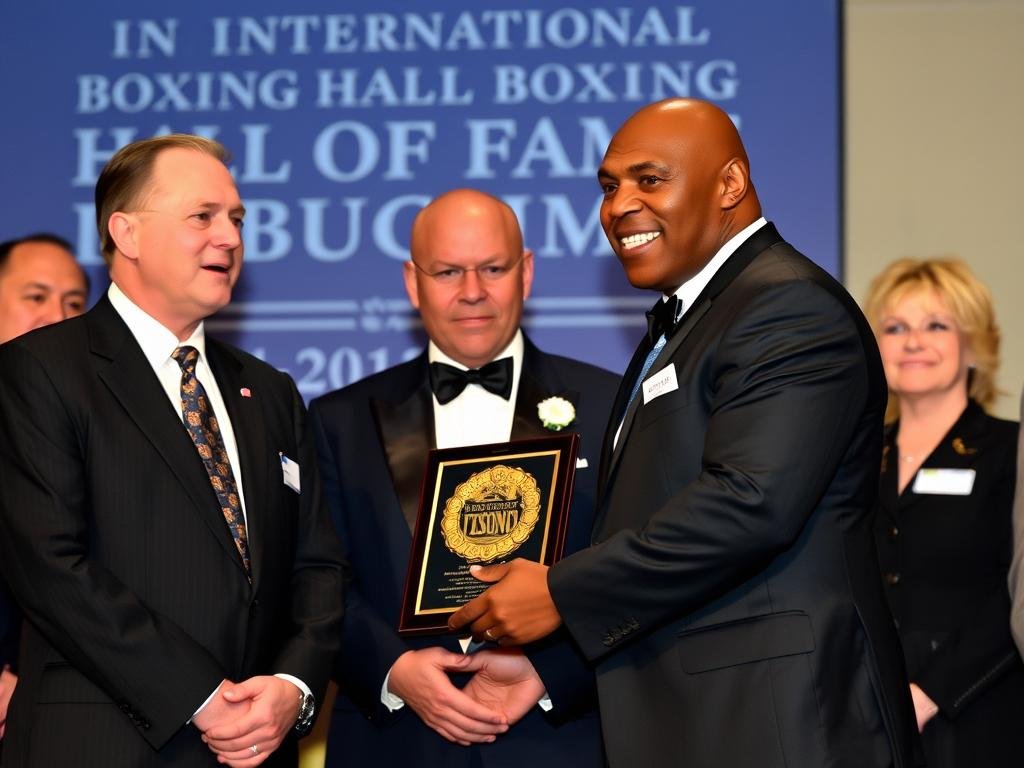
Today’s younger generations often know Tyson more for his cultural presence than his boxing career or controversies. His appearances in popular media, candid interviews, and social media presence have introduced him to new audiences as a philosophical, sometimes eccentric elder statesman of sports – a far cry from the “baddest man on the planet” persona of his youth.
In 2024, at age 58, Tyson returned to the ring once more for a sanctioned fight against social media personality Jake Paul. Though he lost by unanimous decision, the event became the most-streamed sporting event in history, with over 108 million viewers worldwide. This remarkable level of interest demonstrated Tyson’s enduring cultural relevance nearly four decades after his professional debut.
Explore Mike Tyson’s Current Ventures
From cannabis entrepreneur to podcast host, Mike Tyson continues to reinvent himself. Discover his latest projects and business ventures.
Conclusion: The Lessons of Iron Mike’s Journey
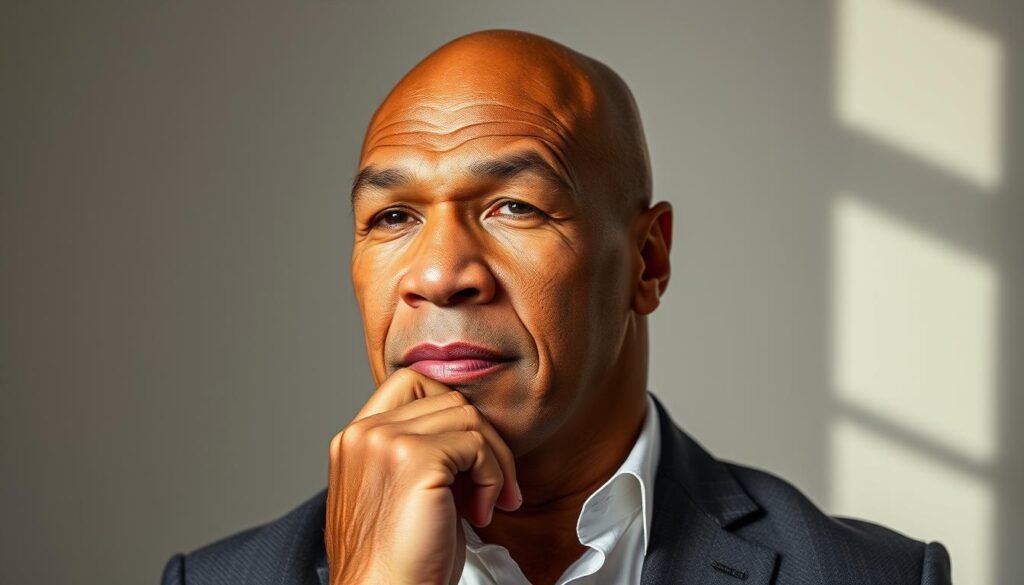
Mike Tyson’s life journey embodies the full spectrum of human experience – from the depths of poverty and despair to the heights of athletic achievement and fame, through the darkness of self-destruction, and finally to a place of wisdom and relative peace. His story is not a simple tale of redemption, but rather a complex narrative about the ongoing struggle for self-improvement and acceptance.
What makes Tyson’s story so compelling is its authenticity. Unlike carefully crafted celebrity comebacks, Tyson’s redemption has been messy, gradual, and punctuated by setbacks. He has never claimed perfection or complete transformation, instead acknowledging that his struggles with anger, impulse control, and personal demons continue. This honesty has resonated with a public increasingly aware of the complexities of mental health and personal growth.
“Everyone has a plan until they get punched in the mouth.”
Perhaps the most powerful lesson from Tyson’s journey is the possibility of reinvention at any stage of life. After his boxing career ended in disgrace and bankruptcy, few would have predicted his successful pivot to entertainment, business, and cultural icon status. His ability to find new purpose and meaning after the end of his athletic career offers hope to anyone facing the conclusion of a defining chapter in their lives.
Tyson’s story also highlights the importance of mentorship and guidance. Just as Cus D’Amato’s influence transformed young Tyson from a troubled delinquent into a disciplined champion, positive influences in his later life helped guide him toward redemption. This underscores how crucial supportive relationships are in both preventing downfalls and enabling comebacks.
Today, at 58, Mike Tyson stands as a living testament to resilience – a man who has experienced extraordinary highs and devastating lows, yet continues to evolve and grow. His journey reminds us that human stories rarely follow neat arcs of rise, fall, and redemption. Instead, they unfold as complex, ongoing narratives of struggle, adaptation, and the persistent search for meaning and peace.
The story of Mike Tyson – the rise, the rage, the redemption – ultimately transcends boxing. It has become a powerful cultural narrative about fame, self-destruction, and the possibility of second chances. In a world that often demands simple narratives of heroes and villains, Tyson’s life reminds us of the complicated, contradictory nature of human experience – and the potential for growth that exists within each of us, regardless of our past mistakes.
Join Our Boxing History Community
Get exclusive content about boxing legends, historic fights, and in-depth analysis delivered straight to your inbox. Plus, receive our free ebook “The Greatest Heavyweight Champions of All Time.”

